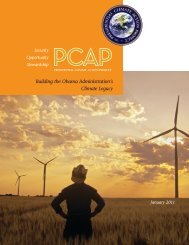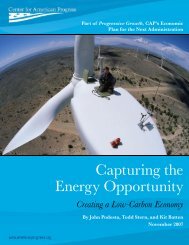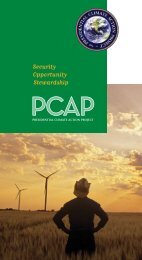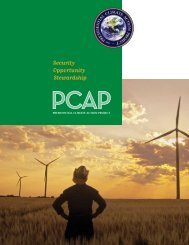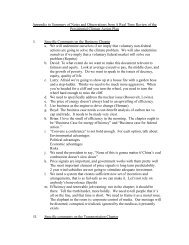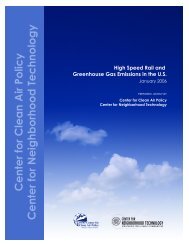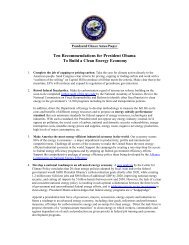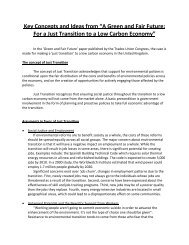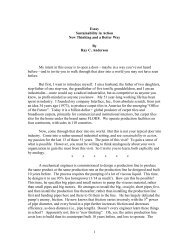PCAP - Presidential Climate Action Project
PCAP - Presidential Climate Action Project
PCAP - Presidential Climate Action Project
- No tags were found...
You also want an ePaper? Increase the reach of your titles
YUMPU automatically turns print PDFs into web optimized ePapers that Google loves.
A. Establish National Energy and Carbon Goals1. Reduce CO 2 emissions at least 80% by 2050, compared to 1990, and at least 25% by2020.2. Reduce national petroleum consumption 50% by 2020, with no increase in domesticproduction.3. Reduce vehicle miles traveled 20% by 2020; 50% by 2050.4. Reduce per capita carbon emissions by half.5. Obtain 25% of electric generation from renewable sources by 2025.6. Reduce economy-wide energy demand at least 2.5% annually, leading to a reductionof 25% by 2020 and 50% by 2030.7. Increase CAFE standard for passenger vehicles and light trucks to 50 mpg by 2020,and 200 mpg by 2050.A1-7Generally. The President has substantial authority to set energy and climate change policy asestablished in Chapter II of this report and examined further below. Nothing prevents thePresident from proclaiming the policies and recommendations developed under his authority toplan national energy and climate change policy, or to use an executive directive for thisproclamation which can include goals and targets.Historically, the President has issued directives for many of the same types of goals and targetsin the context of federal operations. 67 These executive orders are directed to agency officials andare typically limited to the management of their operations. These executive orders are thesubject matter of Proposal C-2. In terms of directly regulating the activities of the generalpublic, however, such a directive would be aspirational, which is consistent with the manner inwhich this proposal is framed in the <strong>PCAP</strong> Report. By convention, directives that are issued tothose outside the government are issued as presidential proclamations; executive orders aredirected to officials within the government, 68 and proclamations are more suited for aspirationaldirectives. 69Pursuant to the Global <strong>Climate</strong> Protection Act of 1987 70 (GCPA), which mandates action onglobal climate change, “The President, through the Environmental Protection Agency, shall beresponsible for developing and proposing to Congress a coordinated national policy on globalclimate change.” 71 Further, the Act specifies that such policy formulation shall consider researchfindings of various U.S. science agencies and committees as well as “organizations engaged in67 E.g., Exec. Order Nos.: 13148, 13149, 13123, 12902, 12856, 12003 and 13423. These are analyzed in ProposalC-2.68 See Boundaries Report, Chapter II(1), (2).69 See, e.g., Chapter I of this report (proclamation section).70 Codified at 15 U.S.C. § 2901 Note.71 15 U.S.C. § 2901 Note, § 1103 (b). See also, 15 U.S.C. § 2938(b)(1) (indicates this is an ongoing obligation).CEES 17 | P age



